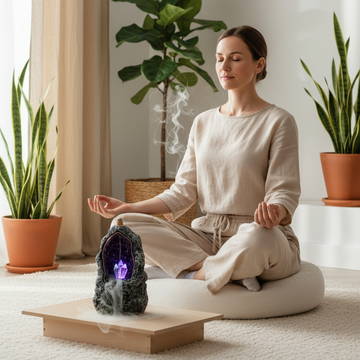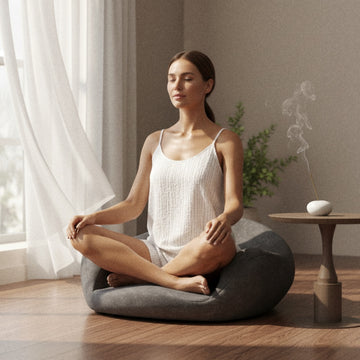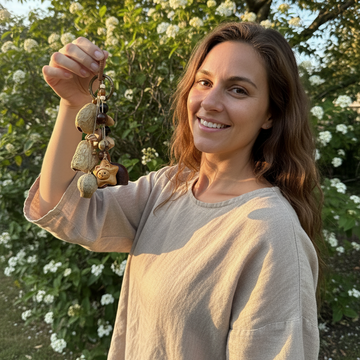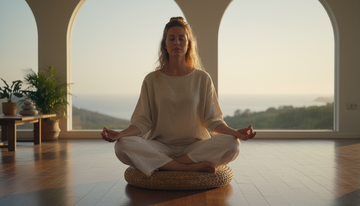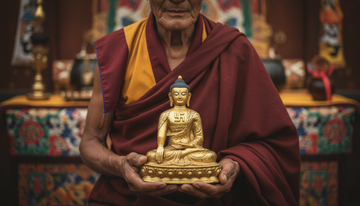Do you often feel overwhelmed by life's pressures, work-related anxiety, and a never-ending stream of thoughts? You've likely heard of "meditation" or "mindfulness" and wondered if it could truly bring you a sense of inner peace. The answer is a resounding yes.
Mindfulness meditation is not a mystical ritual; it's a simple yet powerful form of mental training. It is a skill accessible to everyone, designed to help us step away from the daily noise and reconnect with a state of calm and focus.
This ultimate guide will demystify mindfulness meditation for you and walk you, step-by-step, through your very first practice.
1. So, What Exactly Is Mindfulness Meditation?
Imagine you are eating a strawberry. Instead of just swallowing it, you decide to experience it fully: you notice its color and texture, smell its fragrance, and feel its texture and taste in your mouth.
That is "mindfulness."
The core of mindfulness meditation is: paying attention to the present moment, intentionally and non-judgmentally.
-
Intentionally: You are actively choosing to bring your focus to a specific point, such as your breath.
-
Non-judgmentally: When a thought arises (like "I haven't finished my work for today"), you simply observe its presence without labeling it as "good" or "bad." Then, you gently guide your attention back to your breath.
-
Present Moment: Your focus is not on regretting the past or worrying about the future, but on the physical sensations and the rhythm of your breath, right here, right now.
2. What Are the Benefits of Mindfulness Meditation?
Both scientific research and practical experience have demonstrated that a consistent mindfulness meditation practice offers numerous benefits:
-
Reduces Stress and Anxiety: Through practice, we learn to better manage stressors and lessen anxious feelings.
-
Improves Focus and Concentration: It's like a workout for your brain, effectively enhancing your attention span at work and in study.
-
Enhances Sleep Quality: It helps to quiet the racing mind, preparing both body and spirit for a restful night's sleep.
-
Increases Self-Awareness: You become more attuned to your emotional and thought patterns, giving you greater control over them.
-
Boosts Overall Well-being: By learning to live in the present, we can better appreciate the small, beautiful moments in life.
3. How to Start Your First Practice (A 5-Minute Guide)
Ready to begin? Find a quiet place where you won't be disturbed, and set aside just five minutes to follow these steps:
-
Sit Comfortably: You can sit on a chair with your feet flat on the floor and your back straight but not stiff. Alternatively, you can sit cross-legged on a cushion. The key is to find a posture that is both comfortable and alert.

-
Set a Timer: Use your phone to set a timer for 5 minutes. This frees you from worrying about the time during your practice.
-
Close Your Eyes and Feel Your Breath: Gently close your eyes and bring your full attention to your breath. Notice the sensation of the air entering your nostrils, the rise and fall of your chest or abdomen with each inhale and exhale.
-
Observe, Don't Judge: Very soon, your mind will start to wander. This is completely normal! Don't get frustrated or try to force the thoughts away. Simply notice them as they arise and pass, like clouds drifting across the sky.
-
Gently Return Your Focus: Whenever you realize your mind has wandered, gently and without any self-criticism, guide your attention back to your breath. This very act of "returning" is the core of the practice.
-
End Slowly: When the timer goes off, don't jump up immediately. First, slowly expand your awareness to your entire body, feeling the points of contact with the chair or cushion. Then, gently open your eyes.
Congratulations! You have just completed your first mindfulness meditation practice.
Tips for Beginners
-
Don't Aim for an "Empty Mind": The goal of meditation isn't to have zero thoughts; it's to change your relationship with your thoughts.
-
Start Small: Five minutes a day is a perfect start. Consistency is more important than duration.
-
Be Patient and Kind to Yourself: There is no "good" or "bad" meditation session. Every practice is a valuable experience.
-
Bring Mindfulness into Daily Life: You can practice mindfulness while drinking water, walking, or eating. Simply focus all your attention on the activity at hand.
Mindfulness meditation is a journey of inner exploration. It doesn't ask you to become someone else; it invites you to be more truly yourself. Start today by giving yourself just five minutes to experience the power of the present moment.



